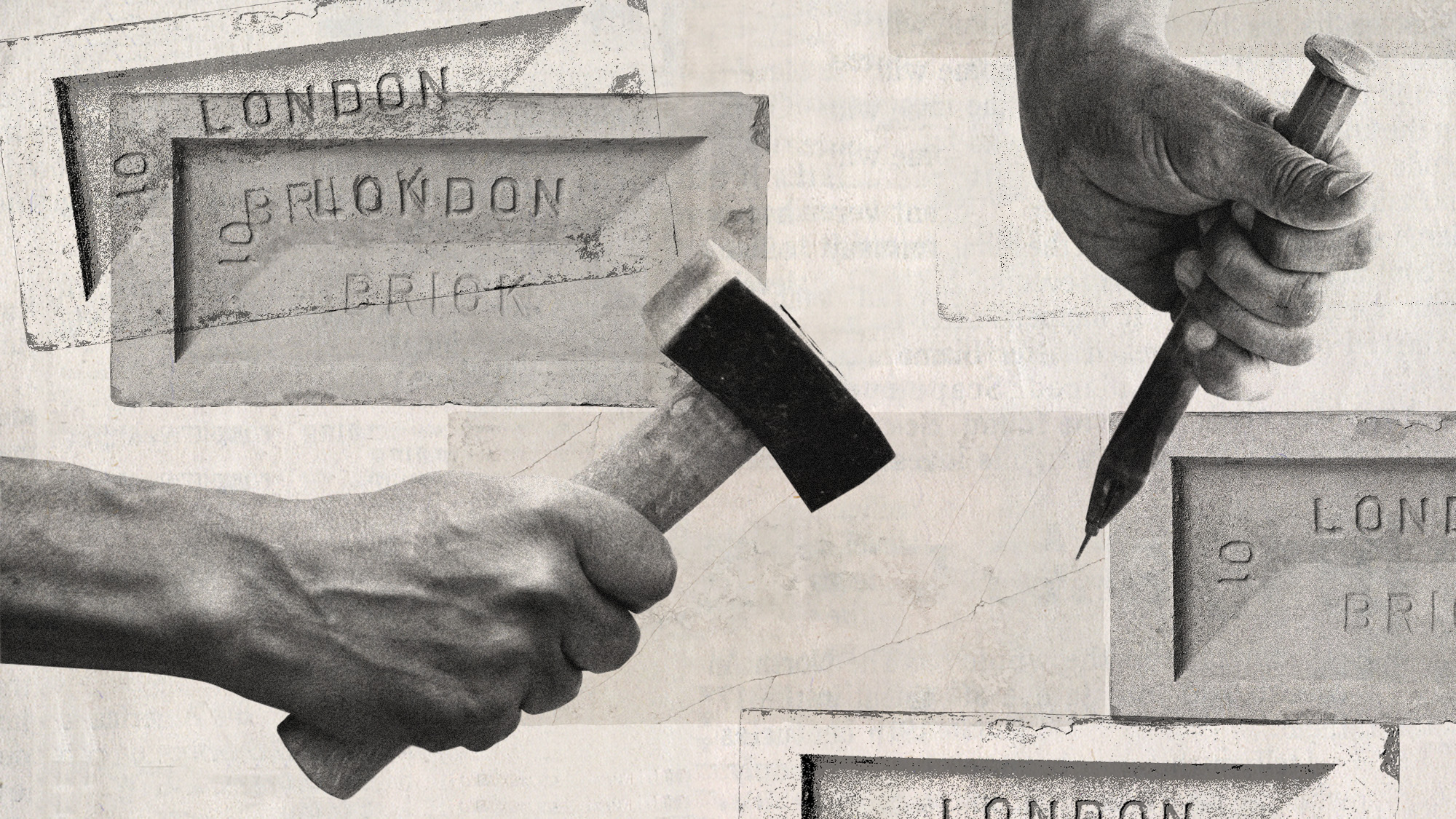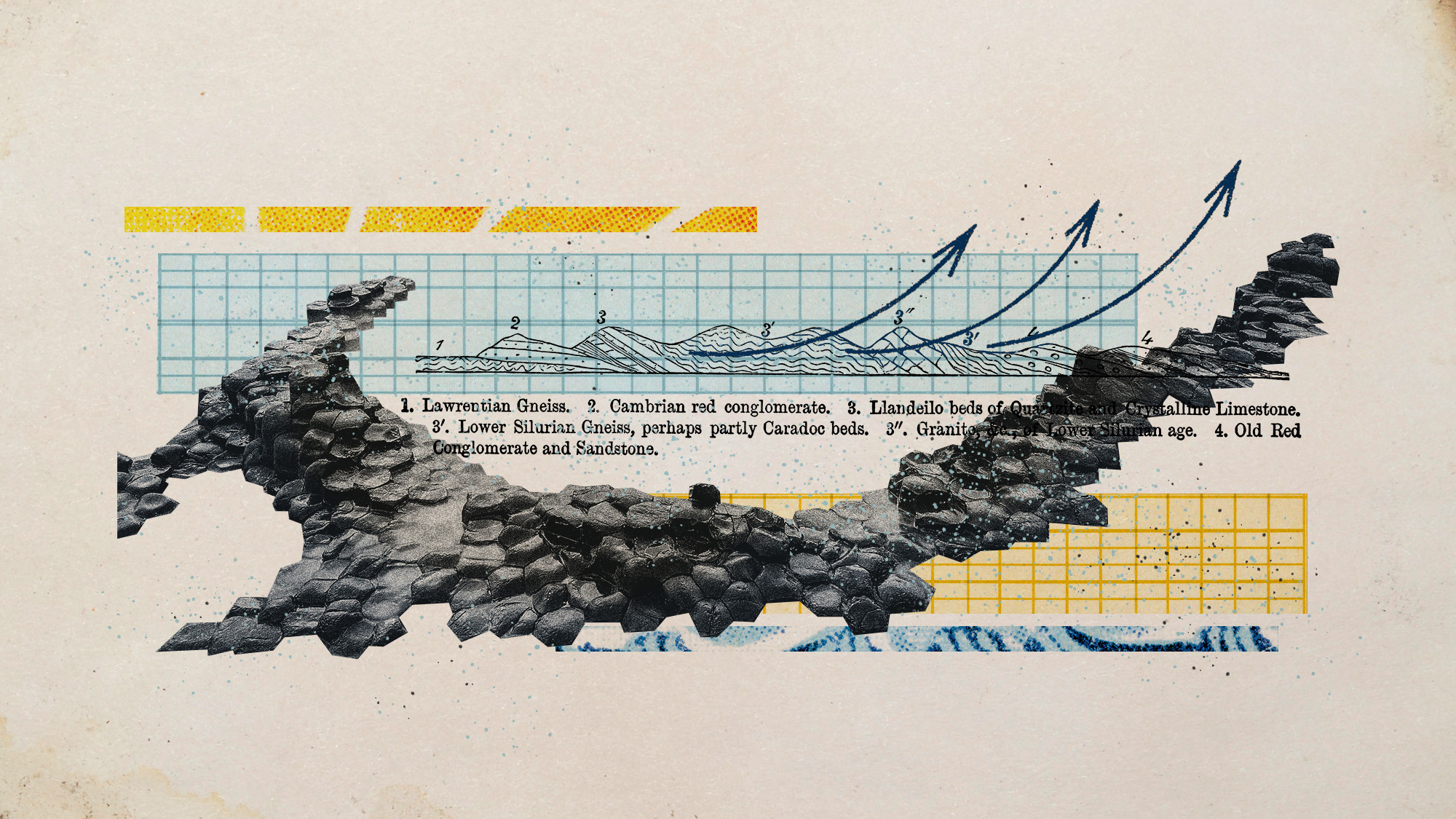Builders return to the stone age
With bricks becoming ‘increasingly unsustainable’, could a reversion to stone be the future?

Stone is “making a comeback” in the building industry after years of being “forgotten”, said the BBC. With clear benefits to the environment, such as a lower carbon footprint than other traditional materials, the substance’s popularity is growing as a more sustainable, and nostalgic, alternative.
In warmer climates, stone is valued for its cooling properties, but the benefits of stone in the UK could be much more varied.
‘Tangible link’ to the past
The rise in demand seems to be particularly welcome north of the border. Scotland’s identity is “closely linked to its stone-built heritage”, said Historic Environment Scotland. Stone infrastructure is not only a “tangible link” to the country’s past, but it also stimulates financial opportunities. Millions of tourists see stonework, and the traditional aesthetic of stone walls and buildings as a “huge draw”, and their arrival provides a “vital source of income” for local economies.
The Week
Escape your echo chamber. Get the facts behind the news, plus analysis from multiple perspectives.

Sign up for The Week's Free Newsletters
From our morning news briefing to a weekly Good News Newsletter, get the best of The Week delivered directly to your inbox.
From our morning news briefing to a weekly Good News Newsletter, get the best of The Week delivered directly to your inbox.
In rural areas, stone walling and stone building have long histories, dating as far back as 5,000 years, said Jennie Rothenberg Gritz in Smithsonian. Stonewalling uses stones, “carefully fitted together in such a way that the wall won’t fall down” without any mortar or cement. This means that if you have to fix one section, the whole wall remains secure, whereas “when a mortared wall cracks, the entire wall is in peril”.
“What price do you put on forever?”, stone wall expert Kristie de Garis told the magazine. “Mortared walls need to be redone roughly every 15 to 30 years. But there are dry stone walls still standing after thousands of years.”
‘Renaissance’ fuelled by sustainability
The most important aspect of stone is probably its “ecological value”, said Christiane Fath in World-Architects.com. Though it has always been popular and used in some of the most famous buildings in the world – think Cologne Cathedral, the Colosseum, or Notre Dame – in the era of climate change, stone is heading for a “renaissance” after major developments in Germany, specifically Cologne, Leipzig and Berlin.
Its benefits are manifold, wrote Fath. Created by natural processes, its production “consumes little energy”, and its “buildings can be recycled” if approached intelligently. Stone building’s human input should not be overlooked: despite the use of machinery in its production, the creation of stone elements is still an “artisan process” providing “additional cultural value”, and is a celebration of timeless craftsmanship.
A free daily email with the biggest news stories of the day – and the best features from TheWeek.com
“Building in brick is increasingly unsustainable”, said Amy Frearson in the FT. Processing bricks involves additional ingredients like lime, sand, and cement, even before the “energy cost of firing and shipping”. Sustainability aside, stone is a way of “delivering the very local character that the government wants” when developing houses, something which is important to local councils.
One major drawback of turning to stone as a material is the problem of “perception”, said the broadsheet. Added to the higher cost, and despite its strong load-bearing capacity, stone has cultivated a “luxury surface finish” image. This drives stringent demand for “uniform varieties”, “leaving anything short of perfect to be rejected and creating a lot of surplus”.
Will Barker joined The Week team as a staff writer in 2025, covering UK and global news and politics. He previously worked at the Financial Times and The Sun, contributing to the arts and world news desks, respectively. Before that, he achieved a gold-standard NCTJ Diploma at News Associates in Twickenham, with specialisms in media law and data journalism. While studying for his diploma, he also wrote for the South West Londoner, and channelled his passion for sport by reporting for The Cricket Paper. As an undergraduate of Merton College, University of Oxford, Will read English and French, and he also has an M.Phil in literary translation from Trinity College Dublin.
-
 Hong Kong court convicts democracy advocate Lai
Hong Kong court convicts democracy advocate LaiSpeed Read Former Hong Kong media mogul Jimmy Lai was convicted in a landmark national security trial
-
 Australia weighs new gun laws after antisemitic attack
Australia weighs new gun laws after antisemitic attackSpeed Read A father and son opened fire on Jewish families at Sydney’s Bondi Beach, killing at least 15
-
 Are Trump’s peace deals unraveling?
Are Trump’s peace deals unraveling?Today’s Big Question Violence flares where the president claimed success
-
 Pros and cons of geothermal energy
Pros and cons of geothermal energyPros and Cons Renewable source is environmentally friendly but it is location-specific
-
 How will climate change affect the UK?
How will climate change affect the UK?The Explainer Met Office projections show the UK getting substantially warmer and wetter – with more extreme weather events
-
 The UK’s surprising ‘wallaby boom’
The UK’s surprising ‘wallaby boom’Under the Radar The Australian marsupial has ‘colonised’ the Isle of Man and is now making regular appearances on the UK mainland
-
 Are we entering a ‘golden age’ of nuclear power?
Are we entering a ‘golden age’ of nuclear power?The Explainer The government is promising to ‘fire up nuclear power’. Why, and how?
-
 The Southern Ocean is holding in a ‘burp’
The Southern Ocean is holding in a ‘burp’Under the radar The heat from the past can affect the future
-
 Megabatteries are powering up clean energy
Megabatteries are powering up clean energyUnder the radar They can store and release excess energy
-
 Scientists want to use enhanced rock weathering to cool the Earth
Scientists want to use enhanced rock weathering to cool the EarthUnder the radar Rock dust could trap atmospheric carbon
-
 Renewables top coal as Trump seeks reversal
Renewables top coal as Trump seeks reversalSpeed Read For the first time, renewable energy sources generated more power than coal, said a new report